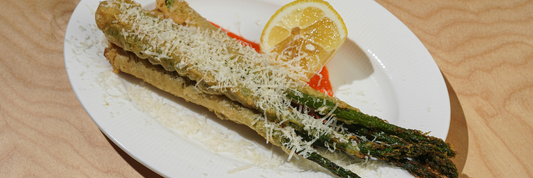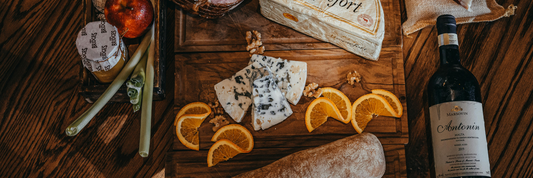When was the last time you tried a restaurant simply because someone recommended it on Instagram or TikTok? Chances are, it wasn’t a Michelin-star critic—but a local food blogger or influencer you trusted.
Influencer marketing has transformed how restaurants and F&B brands connect with customers. But here’s the question: Should you work with micro-influencers or macro-influencers?
At Kimecopak, we know that food businesses need more than great packaging—they need visibility, engagement, and loyal customers. That’s why our Membership program combines eco-friendly packaging discounts with ready-to-use marketing strategies, helping F&B owners leverage tools like influencer marketing to grow sustainably.
-
Harnessing Voice Search to Attract Local Restaurant Customers
-
AI-Powered Chatbots vs. Human Service: What’s Best for Restaurants?
-
Using Facebook Messenger Chatbots to Increase Engagement and Automate Table Reservations
The Power of Influencer Marketing in the Food Industry

Food is social. People love to share meals, recipes, and restaurant experiences online. According to HubSpot, nearly 50% of consumers rely on influencer recommendations when choosing where to eat or what to buy.
For restaurants, influencer partnerships can:
- Boost brand awareness quickly.
- Generate authentic content for social media.
- Drive foot traffic and online orders.
- Build trust with new audiences.
Micro-Influencers in Food Marketing

Who They Are
Micro-influencers typically have 5,000 to 50,000 followers. They may be local foodies, niche bloggers, or TikTok creators passionate about dining and lifestyle.
Strengths of Micro-Influencers
- High Engagement: Followers see them as authentic and relatable.
- Local Impact: Perfect for small restaurants targeting nearby communities.
- Affordable Partnerships: Often charge less than macro-influencers.
- Niche Targeting: Can focus on vegan, dessert lovers, or cultural cuisines.
Weaknesses of Micro-Influencers
- Smaller reach compared to larger influencers.
- May require multiple collaborations to achieve significant impact.
Macro-Influencers in Food Marketing

Who They Are
Macro-influencers usually have 100,000+ followers and include celebrity chefs, lifestyle personalities, or large-scale food bloggers.
Strengths of Macro-Influencers
- Massive Reach: Can introduce your restaurant to a wide audience instantly.
- High Production Value: Professional content, strong branding.
- Authority & Prestige: Association with big names builds credibility.
Weaknesses of Macro-Influencers
- High Cost: Partnership fees can be prohibitive for small businesses.
- Lower Engagement Rates: Audiences may not interact as personally.
- Less Localized Impact: Followers may be spread globally, not just in your city.
Micro vs. Macro Influencers: A Comparison
| Feature | Micro-Influencers | Macro-Influencers |
|---|---|---|
| Audience Size | 5K–50K | 100K+ |
| Engagement Rate | High | Moderate to low |
| Cost | Lower | Higher |
| Local Relevance | Strong | Weak to moderate |
| Content Style | Authentic, relatable | Polished, professional |
| Best For | Local restaurants, niche brands | Large chains, big campaigns |
Choosing the Right Influencer Strategy for Restaurants
So, which is best for you?
- Small to mid-sized restaurants: Micro-influencers are often more effective. They build trust in your community, drive authentic engagement, and are budget-friendly.
- Large chains or franchises: Macro-influencers may provide the visibility and prestige needed for national or international campaigns.
For many F&B businesses, a hybrid strategy works best: collaborate with several micro-influencers for consistent local buzz while occasionally working with macro-influencers for larger campaigns.

How Kimecopak Membership Helps with Influencer Marketing
Choosing influencers is just the start. To truly benefit, restaurants need a plan. That’s where Kimecopak Membership comes in:
- Access social media templates to design engaging posts.
- Use content calendars to plan collaborations with influencers.
- Receive strategic marketing support to maximize ROI from campaigns.
- Combine influencer partnerships with eco-friendly packaging to strengthen brand image and appeal to conscious consumers.
This all-in-one approach helps you not only attract attention but also convert it into loyal customers.
FAQs
1. Do micro-influencers actually drive sales?
Yes. Their smaller but engaged communities often convert better, especially for local restaurants.
2. Are macro-influencers worth the investment?
They can be, particularly for larger campaigns where visibility and prestige matter.
3. Should restaurants use both micro and macro influencers?
A hybrid approach works well—micro for steady local engagement, macro for larger brand pushes.
4. How does Kimecopak Membership support influencer marketing?
It provides ready-to-use marketing tools and eco-friendly packaging discounts, giving restaurants the resources they need to maximize results.
-
LEARN MORE about How "Subscribe for a Happy Life" will benefits your business HERE!
-
LEARN MORE about Kim Vu, sharing on the challenges she faced as a former restaurant owner, and how she overcame them to create KimEcopak HERE!




